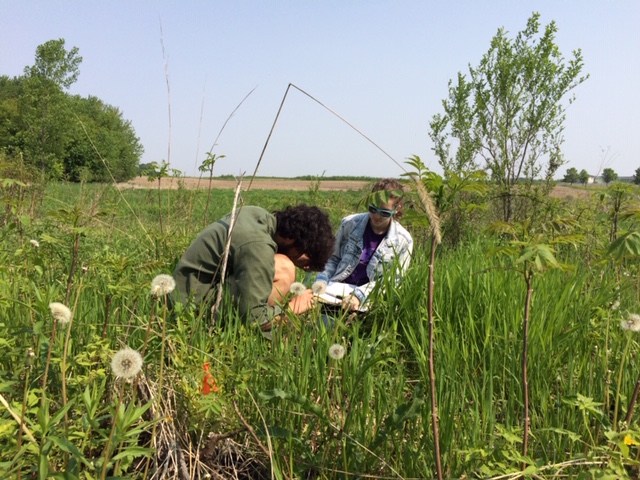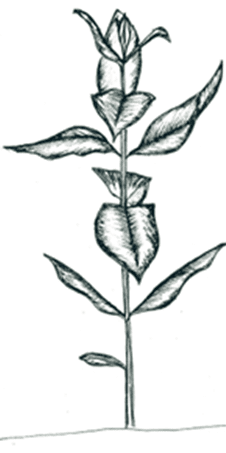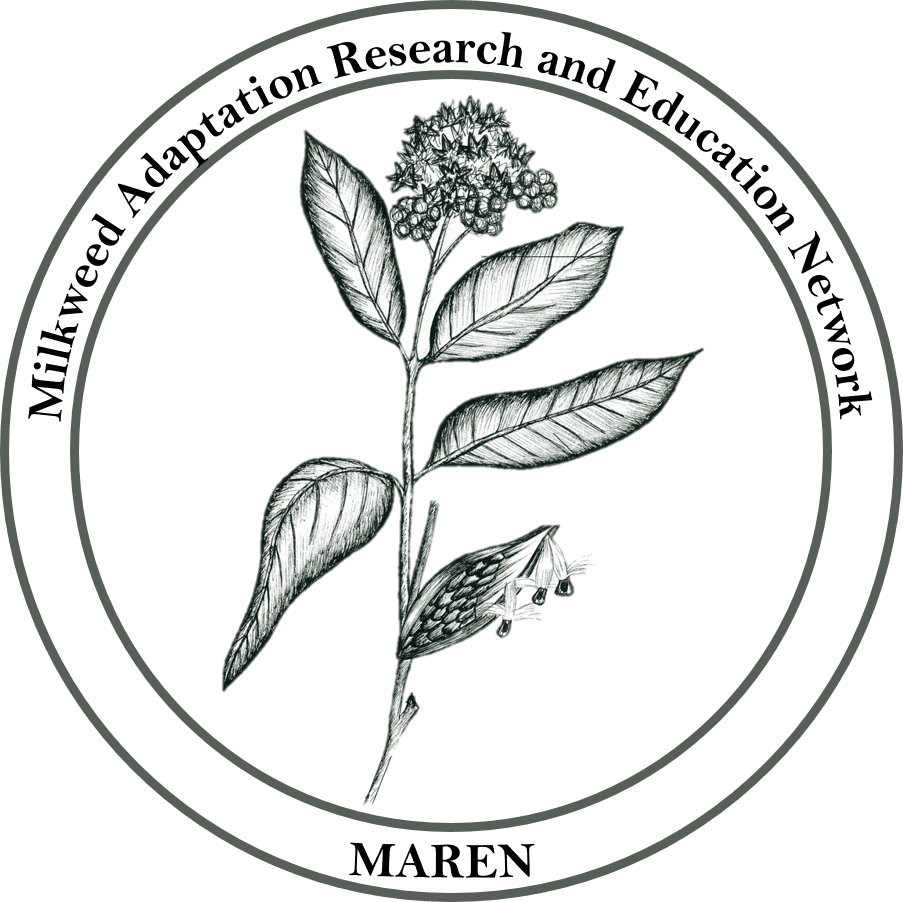Welcome to our Network
The Milkweed Adaptation Research and Education Network is a collaborative project that aims to understand the impact of restoration practices for common milkweed through the integration of structured research into students’ learning experience. Educators and their students come together to help answer novel questions with practical restoration applications, allowing students the opportunity to contribute to a rigorous and professional scientific investigation. We believe that structuring our research program to provide participants at every stage with opportunities for both mentoring and learning will serve our immediate research goals and enable students to see themselves as future researchers.

Our Origins
The Milkweed Adaptation Research and Education Network began in 2015 when Emily Mohl, a professor at St. Olaf College in Minnesota, joined the Ecological Research as Education Network (EREN) and educators began collecting seeds for what would eventually become the local adaptation project. We continue to work with and be supported by EREN. St. Olaf college supports work on the project, especially through the CURI summer research program for students. This website and our citizen science ethics lesson were designed with support from the Institute for Freedom and Community at St. Olaf College. Beginning in 2020, our work has been supported by the National Science Foundation NSF-DEB-Award 1936621. Any opinions, findings, and conclusions or recommendations expressed in this material are those of the author(s) and do not necessarily reflect the views of the National Science Foundation or EREN.
Our Mission
We believe that when scientists, educators, and students collaborate they are able to answer creative questions about our world. We’re asking questions about common milkweed, a plant that is important to the declining population of migrating monarch butterflies. We want to know how populations of common milkweed vary based on where they come from, and how they might respond when grown in a different region. Individuals, organizations, and communities have been inspired to plant milkweed in support of monarch populations. Does it matter where the milkweed comes from? If milkweed seeds come from Maine, how well would they grow in Minnesota or Virginia?
We’re working on answering these questions, and because milkweed has a broad geographic distribution, we believe that more hands will help us answer them more accurately. By participating in this investigation, students will learn how scientific ideas are tested and debated and how to make scientific arguments. They will get up close and personal with measurements, manipulate data, look for patterns, and generate new questions. Teachers and researchers will ask questions with them, and develop new ways to answer them. By working together we believe that we can promote better research, better teaching, and better learning.
Our Research
We are investigating patterns of adaptation in common milkweed and the probable causes for these patterns. Because evolution can cause different populations of the same species to become adapted to their local environments, individuals might not grow as well in novel environments. For example, milkweed from Virginia might suffer in the colder climate and shorter growing season in Minnesota, or Minnesota milkweed might be more easily consumed by Virginia insects. This principle is called local adaptation, but we don’t know how it applies to common milkweed. If we understand the scale and patterns of adaptation, people should be able to make better decisions about how to choose milkweed seeds that will grow best in their region.
Why Milkweed?
Milkweeds were initially used medicinally and as a source of fiber, but with the spread of agriculture, they became viewed as weeds. Now that monarch populations are declining, possibly because of a concurrent decline in milkweed populations, many people are interested in planting milkweed. Monarch butterflies are a culturally significant species for many people, for example, they are associated with the Day of the Dead celebrations in Mexico. Monarchs are one of the most widely recognized insect species, and they complete a remarkable annual migration. Furthermore, the decline of milkweeds and monarchs is emblematic of human impacts leading to declines of many species, especially insects, that play important roles in our world from pollinating our foods to recycling nutrients in the soil. Reconstructing degraded ecosystems is a complicated process; we are trying to learn more about this process by focusing on one plant species and the organisms it interacts with directly.
When people plant milkweed in their gardens and in their communities to restore ecosystems, do they need to worry about where their seeds come from? Will their interactions with pollinators and other native insects shift depending on their source? Scientists have already learned a lot about milkweed, but we think that lots of people collaborating together can help to provide more answers.
Our Curriculum
The Milkweed Adaptation Research and Education Network has developed curriculum to help students understand the concepts and practices relevant to the experiment. The curriculum resources are meant to be adaptable for students in grades 6-16, and they highlight the concepts of evolution and local adaptation, the importance of phenology for adaptation and species interactions, connections between conservation and evolution, and the ways scientists engage in evidence-driven debate. Students who gather data and use the curriculum should develop skills in taking measurements, conducting observation, and using data to generate scientific arguments.

